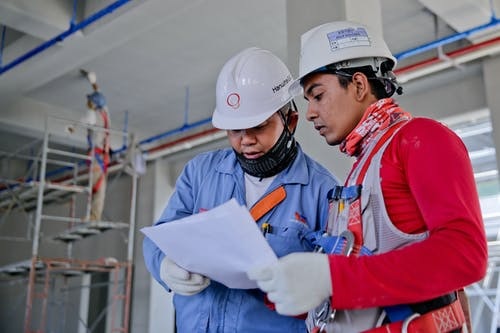Optioneering is a method employed to identify and assess several project design and construction alternatives. It entails evaluating the costs, advantages, and risks of each alternative and picking the best one in light of the project’s goals and limitations.
By giving contractors, architects, and engineers a competitive edge during the bidding process, optioneering can assist in winning more construction projects.
Optioneering is a challenging process that calls for extensive knowledge and experience. Contractors must possess a broad range of technical, financial, and management abilities in addition to a thorough awareness of the project’s requirements. A variety of data sources, such as project data, market data, and industry benchmarks, must also be available to them.
Contractors can employ a variety of software tools to support the optioneering process for choice analysis and impact assessment. ALICE is a construction optioneering platform that can provide immense value. Contractors can identify possible risks, create more accurate and trustworthy estimates, and effectively track the progress of projects.
The following are some strategies for using optioneering to win more projects.
Improved comprehension of the project requirements
Project needs, such as site conditions, budget, materials, and regulatory constraints, are thoroughly analyzed as part of the optioneering process.
You can make suggestions for solutions that satisfy the client’s demands and expectations by thoroughly comprehending these requirements. By doing this, you may set yourself apart from the competition and improve your chances of landing the project.
Better construction techniques and design optimization
By comparing several construction designs and processes, optioneering seeks to find the best practical and cost-effective solution. You can lower costs, lower risks, and raise project quality by improving the design and techniques. This can make your bid more appealing and improve your chances of landing the job.
Identifying possibilities for cost savings
By comparing the advantages and disadvantages of several choices, optioneering entails finding cost-saving opportunities. You can submit a more competitive bid and improve your chances of winning the job by finding cost-saving possibilities.
Cost savings can be attained in a variety of ways, including through waste reduction, alternative material use, and design and procedure optimization.
Mitigation of project risks
Optioneering involves identifying and evaluating project risks and proposing solutions to mitigate them. By mitigating project risks, you can reduce the likelihood of unexpected costs, delays, and quality issues. This can help you offer a more competitive bid and increase your chances of winning the project.
Enhanced client cooperation and communication
Working closely with clients to comprehend their needs, preferences, and limits is a part of optioneering. You can boost your chances of landing the assignment by working together and interacting with clients in an effective manner. You can spot problems early and suggest remedies that satisfy the client’s needs by using effective communication.
It can reveal the priorities of the client. The client’s evaluation of the various possibilities will expose important goals, issues, and other information that may be used to improve your ideas or choose the best offer.
Pay attention to the choices they spend the most time discussing, as well as the costs or features that pique their interest. This additional information can be helpful in adjusting your services to reflect the client’s top priorities.
Differentiation from the competition
By providing distinctive solutions that cater to the demands and preferences of the client, optioneering can help you stand out from your rivals. You may distinguish yourself from the competition and improve your chances of landing the project by offering creative, effective, and affordable solutions.
Differentiation can be done in a variety of ways, including the use of alternative materials, the promotion of energy-efficient solutions, and the application of cutting-edge technology.
Optioneering offers clients more options. Giving clients options to choose from allows them to analyze advantages and cons and choose the service that best meets their budget, timing, and other important factors. This process is known as optioneering.
Giving customers additional options increases the chance that they will select one that they prefer. When you give the client options, there are more chances that it will work for them than when you only offer one solution.
Optioneering aids construction companies in obtaining additional contracts. Having a well-developed optioneering process can provide contractors an advantage over their rivals in highly competitive bidding conditions.
Contractors can better their chances of winning the bid by offering a well-considered, economical solution. It displays your worth. A client will appreciate your knowledge, experience, and dedication to finding the best answer when you give them many options.
You are spending time and effort to fully comprehend the client’s issues and objectives, not just delivering a single, bare-bones quote. This demonstrates your worth as a contractor and might help you stand out as a better option.
Project delivery and quality improvements
Optioneering can enhance project delivery and quality through design and technique optimization, cost-saving possibilities detection, and risk mitigation.
You may establish a good reputation and raise your chances of landing future jobs by completing projects on schedule, within the allotted budget, and to the required quality. Recurring business and referrals may result from improved project execution and quality.
Having several workable solutions shows that you can solve complex challenges. Building confidence in your capacity to handle whatever may happen during the actual execution of the work requires demonstrating good problem-solving skills during the bidding process.
Construction projects frequently contain unforeseen complications and challenges. Offering alternatives demonstrates a proactive, problem-solving approach that clients find appealing.
The building sector has started embracing optioneering. By giving them an advantage in the bidding process, lowering project costs and risks, and enhancing the project’s overall quality, optioneering aids contractors in winning more construction projects.
One of optioneering’s key benefits is that it enables contractors to find the project’s best affordable solution. Contractors can assess all available options and choose the one that delivers the best value for money by analyzing several options. This can be especially useful in circumstances where you need to stay within a particular budget and deadline.
